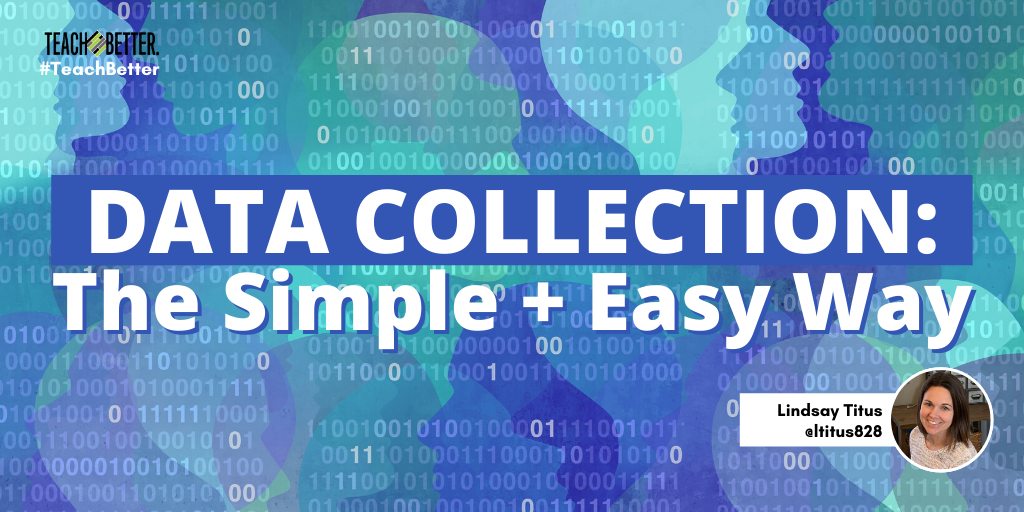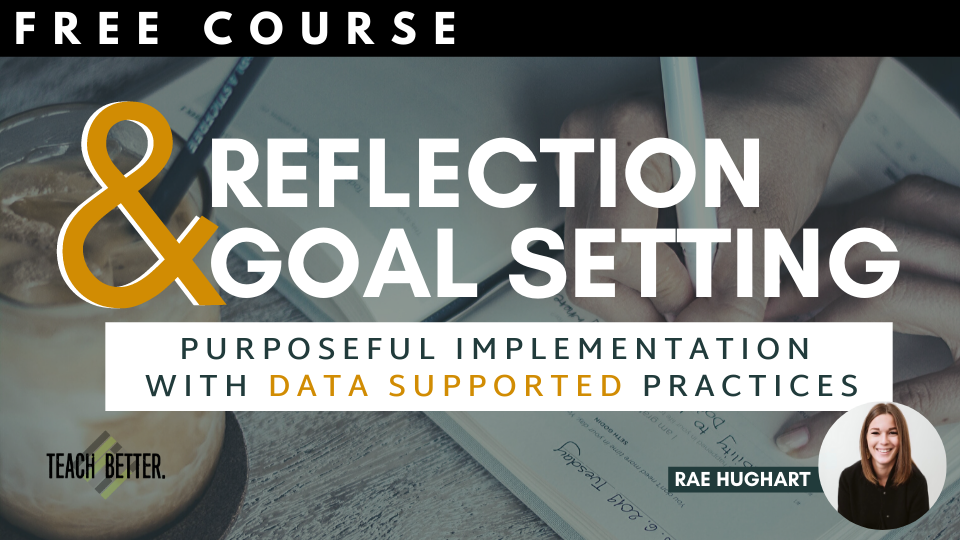TL;DR:
- Data collection helps us make informed decisions for our students.
- Collaborating with a team to use data effectively is a powerful tool to guide our decisions.
- The steps for data collection include: understanding the why, collecting the data, checking in with the team, then analyzing and sharing the results.
Data, as I’ve come to learn, is one of those terms in education that can quickly divide people into two distinct teams. Team Data and Team No Data. It’s probably no surprise that as a behavior analyst, I’m a proud member of Team Data! As a member of Team Data, I have three foundational truths for data collection that I remember every single day.
- Data is a tool! It is a collection of information used to make decisions. However, it is not the only source of information in a classroom or school setting. It is important to remember that data is a part of the solution, not the entire solution.
- People first, data second! Keeping the perspective on the individual, or a larger group, helps to ensure we stay focused on the people as the top priority, not the numbers.
- Data comes in more forms than test scores and frequency charts.
Data can be a powerful tool! Yet it can also become “one more thing” people have to do in their classrooms or school settings. That is what can hold us back from allowing data to be an effective tool.
When training staff on data collection, I like to think of data as a play. I can see it now, Data: The Musical, coming to Broadway this summer! Well, maybe not quite that extreme, but here are four ways to better understand how you, too can use data effectively in your classroom or school setting.
Data: Setting The Stage
It is essential that we highlight the importance of why the data is being collected. What will it be used for? What are we looking to gather? Start with the WHY when it comes to data! This simple step turns data from “one more thing to do” to “information that is useful and purposeful.”
As the saying goes, in order to be useful, the item has to be used. If staff are unaware of why they are collecting data, or what the intended purpose is, the likelihood they will collect data with fidelity and accuracy is less than if they see the value in the information they are collecting.
Data: The Main Act
The star of the show – it’s time to collect the data! I recommend creating the data system with the team that will be collecting the data. When I am working with a team to collect behavioral data, I bring at least two examples of how we can collect the data and let them decide which one will be easier and simpler to use in their current classroom.
As the behavior analyst, I can control what the sheets look like, but I can’t control that they will take the data. However, I’ve found that by selling the purpose and pairing it with ownership of a system – that they understand and have a choice and a voice to design – the results speak for themselves!
Data: Intermission
Once data collection has started, check in! Take a moment to reflect with the team or to review the numbers to ensure the data we are collecting aligns with our intended goal. By being proactive, we have the chance to alter or change the system instead of getting to the end of the collection period and realizing that we weren’t actually collecting what we needed. I also use this time to provide positive praise and feedback to the team for the work they are doing to collect the data!
[scroll down to keep reading]Data: The After Party
After the data is collected and analyzed, share the results! Show the team the product that came from their efforts! When I’m working with a team, I bring the graphs, we highlight the results, and talk about how this data will help us move forward with interventions for the student.
One other key-player in a play is the lead role. When collecting data, always remember the people (student, teachers, community) are the lead roles. Behind every number is a person. The test score being reviewed is a test score of a child. Every graph analyzed is displaying someone learning new skills. For data to be an effective tool, it is imperative that people engage with it, rather than becoming enraged with it. Remember: people first, data second.
It’s true that data can be difficult to collect. It can be “one more thing” to do. Or it can be a powerful tool to help guide our decisions. It can be a powerful resource to visualize the progress or changes needed in a current system.
As we continue to use data to strengthen the decisions we make in our schools and classrooms, let’s remember data is a tool to drive the conversations, to visualize our progress, and above both, always keep the focus on the people as the top priority!
About Lindsay Titus
Lindsay Titus is a K-12 Behavior Specialist with a license in behavior analyst. As a Board Certified Behavior Analyst, Lindsay coaches and trains educators on the study of behavior and how to implement evidence based behavior principles in simple and easy ways! With experience as a classroom special education teacher, and behavior specialist in public schools, residential placement, and private settings, Lindsay enjoys working with all educators looking to reignite their passion for education, connect with all students, and conquer challenging behavior in any classroom setting.




